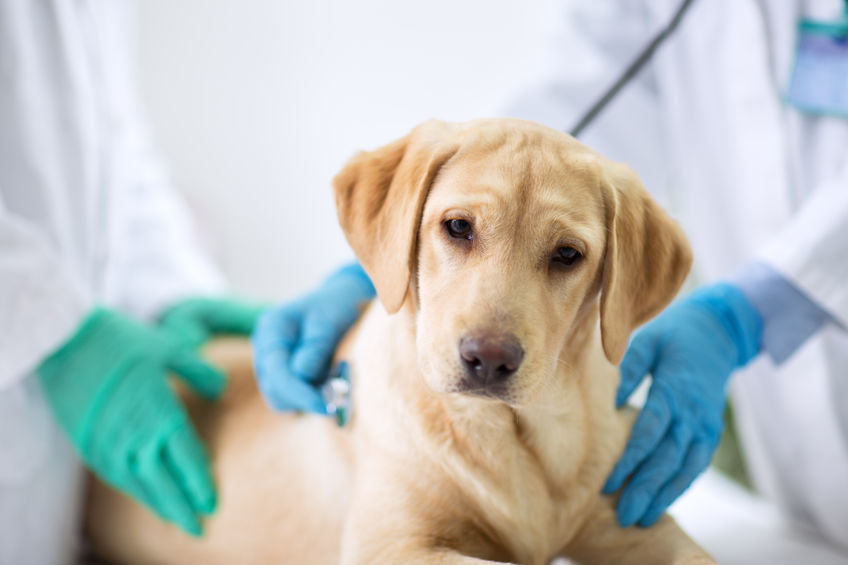What Veterinarians Need to Know About Mobile Veterinary Imaging

Whether it's a toy poodle or a working horse, people want to make sure their pets and farm animals receive the best medical treatment possible.
Similar to its human counterpart, medical imaging for animals has become an important part of diagnosis and treatment. However, some of the more advanced and expensive equipment required for imaging, like computed tomography (CT) scanners or magnetic resonance imaging (MRI) machines, is likely not part of the normal repertoire of most veterinary clinics.
Luckily, companies offering mobile medical imaging services are part of a growing trend as they will come directly to a veterinarian - or any other location an animal resides - to supplement the local vet's capabilities.
The Rise of Mobile Imaging Services
There are multiple reasons why mobile imaging services are on the rise. For one, people are paying more attention to their pets' medical care and are willing to do whatever it takes to keep their animals healthy. They're more willing to engage with advanced treatments and seek out specialist veterinarians, much like in the world of human medicine, from orthopedists to cardiologists and ophthalmologists.
But before they do, their local vets can confirm the need to bring in a specialist by ordering a scan on a modality that they might not necessarily have available to them in their day-to-day practice.
In addition, it is cumbersome to transport large, high-value animals such as horses and cows to a fixed location where a medical imaging modality resides. It's typically easier and more convenient for a mobile unit to come to the animal's location and perform the scan there instead.
If you are thinking about how mobile veterinary imaging can aid you in your practice, here is what you need to know...
Why Mobile Veterinary Imaging Is a Great Option
Suppose that you, as a veterinarian, need to perform a scan of Fido the dog's heart to confirm the need to engage a cardiologist.
In most circumstances, you probably don't have your own CT scanning setup at your practice. This means that your options are to either make an educated guess without imaging, send Fido to another facility to be imaged or to have a mobile imaging unit come to your practice.
If you choose to work with a mobile imaging unit, there are three key benefits.
- First, you have immediate access to the scans. The medical imaging is taken onsite, and the study instantaneously becomes available to the local veterinarian.
- Second, rather than making an investment in an expensive medical device that you may use infrequently and paying to support and maintain it, you can "pay by the drink" for each scan from the mobile unit that you request.
- Finally, it becomes extremely simple to electronically share the image with specialists should the need be confirmed. Cloud access makes it possible for mobile veterinary imaging providers to share studies with physicians. This translates into images that can easily be transmitted to a specialist in advance of their engagement for consultation and confirmation. Additionally, these images can also be shared with the pet owner, giving them piece of mind and the ability to carry their images with them should they ever be required again for comparison purposes.
Best Practices for Engaging Mobile Veterinary Imaging
To support mobile veterinary imaging at your practice, you first need to ensure that you have an effective and easy way to receive those images. That means that your cloud picture archiving and communication system (PACS) needs a gateway to receive images from the mobile veterinary imaging specialists. Vets with cloud-based PACS often have an easier time accepting these images into their own systems.
Mobile imaging will only be considered an advantage for a veterinary practice if the mobile provider can deliver the studies in a timely manner. If your pet patient has a serious ailment, the last thing that you want is a long delay before the study is available for diagnosis. You need to be sure whomever you engage with for your mobile imaging can immediately make that study available to you or directly to your reading radiologist to be interpreted.
If you don't have your own veterinary radiologist on staff, some of the more sophisticated mobile imaging companies will offer the additional service of having your imaging study assessed by a certified veterinary radiologist for an additional fee. If your need to interpret medical images is infrequent, paying per read may prove to be more cost effective than having your own radiologist in-house.
Flexible Access Is Critically Important
While it's true that mobile veterinary imaging services are becoming more available, using this service is really only valuable if you can receive images for diagnosis in a timely manner. Additionally, ensuring that the images you get from the mobile veterinary imaging provider can be easily shared is critically important.
So, before you engage with a mobile modality solution, be sure your own systems are prepared to access, store and share medical images effectively.
Looking for more information about Purview Image?
Walk Through a Self-Guided Demo or
Book a Test Drive With a Purview Representative Today

